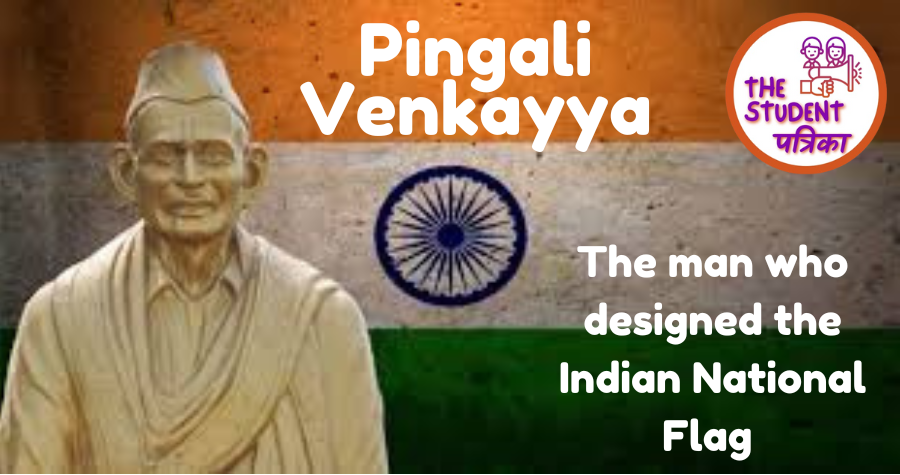
Flags are more than just pieces of cloth; they symbolize the essence, values, and aspirations of a nation. The tricolor that proudly flies as India's national flag was conceptualized by a visionary named Pingali Venkayya. His journey from a small village to designing one of the most iconic symbols of Indian identity is a testament to his passion, creativity, and unwavering patriotism.
Early Life and Education:
Born on August 2, 1876, in Bhatlapenumarru, Andhra Pradesh, Pingali Venkayya grew up in a modest household. His early years were marked by an innate curiosity and a keen interest in languages, history, and culture. After completing his primary education in his village, Venkayya pursued higher studies in Chennai. He continued to explore various fields, displaying an intellectual versatility that would later prove crucial in his design of the national flag.
Career and Contributions:
Venkayya's journey took him to different parts of the world, where he engaged in various professions ranging from teaching to agriculture. However, his unwavering commitment to serving his nation remained constant. It was during his time as a soldier in the British Indian Army that Venkayya's creative genius came to the forefront.
He was not only a visionary but also an ardent nationalist, which led him to conceptualize the idea of a national flag that could truly represent India's diverse heritage and its aspiration for freedom. His original design consisted of two horizontal stripes – red and green – representing the two major communities of India, with a spinning wheel (charkha) in the center, symbolizing self-sufficiency and progress through indigenous industries.
Further Achievements:
Pingali Venkayya's pivotal role in shaping India's national identity continued beyond the creation of the flag. He worked tirelessly to promote the use of khadi (handspun cloth) and the charkha as symbols of economic self-reliance. These efforts aligned with Mahatma Gandhi's vision of swadeshi (self-sufficiency) and nonviolent resistance against British colonial rule.
Despite his immense contributions, Venkayya faced challenges in gaining recognition for his work. Financial difficulties and the lack of institutional support led him to lead a relatively humble life. However, his legacy endured, with his original flag design being officially adopted as the Indian national flag on July 22, 1947, a few days before India gained independence.
Life Learnings:
Pingali Venkayya's journey from a small village to becoming the creator of India's national flag is a testament to the power of individual creativity and determination. His innovative design, which beautifully represented the unity in diversity of India, remains an enduring symbol of the country's freedom struggle and its relentless pursuit of progress.
Venkayya's life story teaches us that even the simplest ideas can carry immense significance when driven by a sense of purpose and unwavering commitment to a cause. As we gaze upon the tricolor that flutters in the wind, let us remember the man who dared to dream of a free and united India, and whose legacy continues to inspire generations.
Also Read:
Comments
Thanks. An abundance of facts! casino en ligne France Amazing many of fantastic info. casino en ligne Great content, Thanks! casino en ligne francais Thanks a lot. Excellent stuff. casino en ligne Kudos! Plenty of info! casino en ligne Appreciate it! A good amount of knowledge! meilleur casino en ligne Appreciate it. A good amount of advice! casino en ligne Wow loads of amazing information! meilleur casino en ligne Many thanks, I like it! casino en ligne Thank you. Numerous posts! casino en ligne










